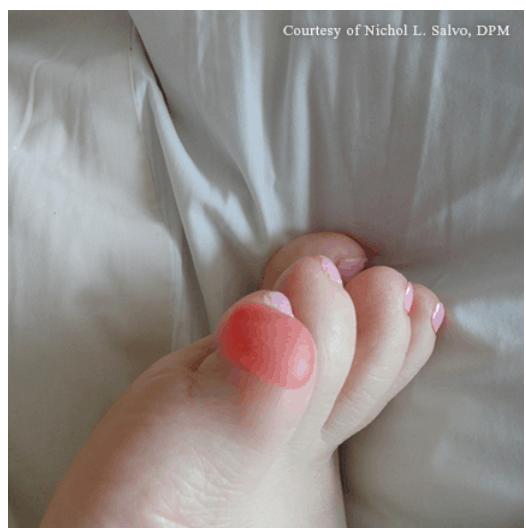To Pop or Not to Pop?
School has started, the temperatures are dropping and fall sports are beginning. It’s a good time to check your shoes to make sure they still fit properly. Whether you are a professional athlete, a weekend warrior or a beginner athlete poor fitting shoes can have a negative effect on your performance. This is especially true in children and adolescents who are still growing. Some children’s shoe sizes can increase rapidly, especially during a growth spurt. I often have children come in with blisters after wearing their athletic shoes from “last year” to begin a new season of activities. Shoes that do not fit properly can cause blisters to form on your feet. Most blisters are not life threatening, but they can be painful. Most blisters are preventable.
A blister is a soft pocket of fluid that forms in the skin caused by friction. The friction causes the layers to the skin to separate and become filled with fluid. The friction can come from poorly fitting shoes and/or socks rubbing against the skin of the feet while you are walking. This happens when your shoes are either too small, too big or not properly broken in. Blisters can also be caused when your feet are moist and rubbing in your shoes.
To prevent blisters from occurring be sure to wear shoes and socks that fit properly. If your socks are too loose it can increase the friction in your shoes. Also be sure that your feet are dry. This can be accomplished by wearing moisture wicking socks or using a powder to decrease the moisture in the shoes. Applying a thin layer of padding, such as moleskin can help decrease the friction between your shoe and foot. You can also place a band-aid over the area where the friction is present. Be sure to break in your shoes before wearing them for an extended period of time. A shoe that has been broken in has less of a chance of rubbing against your foot and causing problems.
If a blister forms, you should NOT pop the blister. It needs to break on its own. You can place a bandaid over the blister to help reduce friction and pain. If the blister starts to drain or pops on its own, you can apply antibiotic ointment to the area and cover it with a bandaid. The ointment will help to decrease the chance of infection. If the fluid that drains from the blister is clear, the chance of infection is low. On the contrary if the fluid is red, greenish, or yellow that could be an infection. If there is an infection you should seek medical attention as soon as possible.
The next time you have a blister, remember to make sure your shoes fit properly and fight the urge to pop the blister.

[text-blocks id=”4288″ slug=”disclaimer”]
[mashshare]

